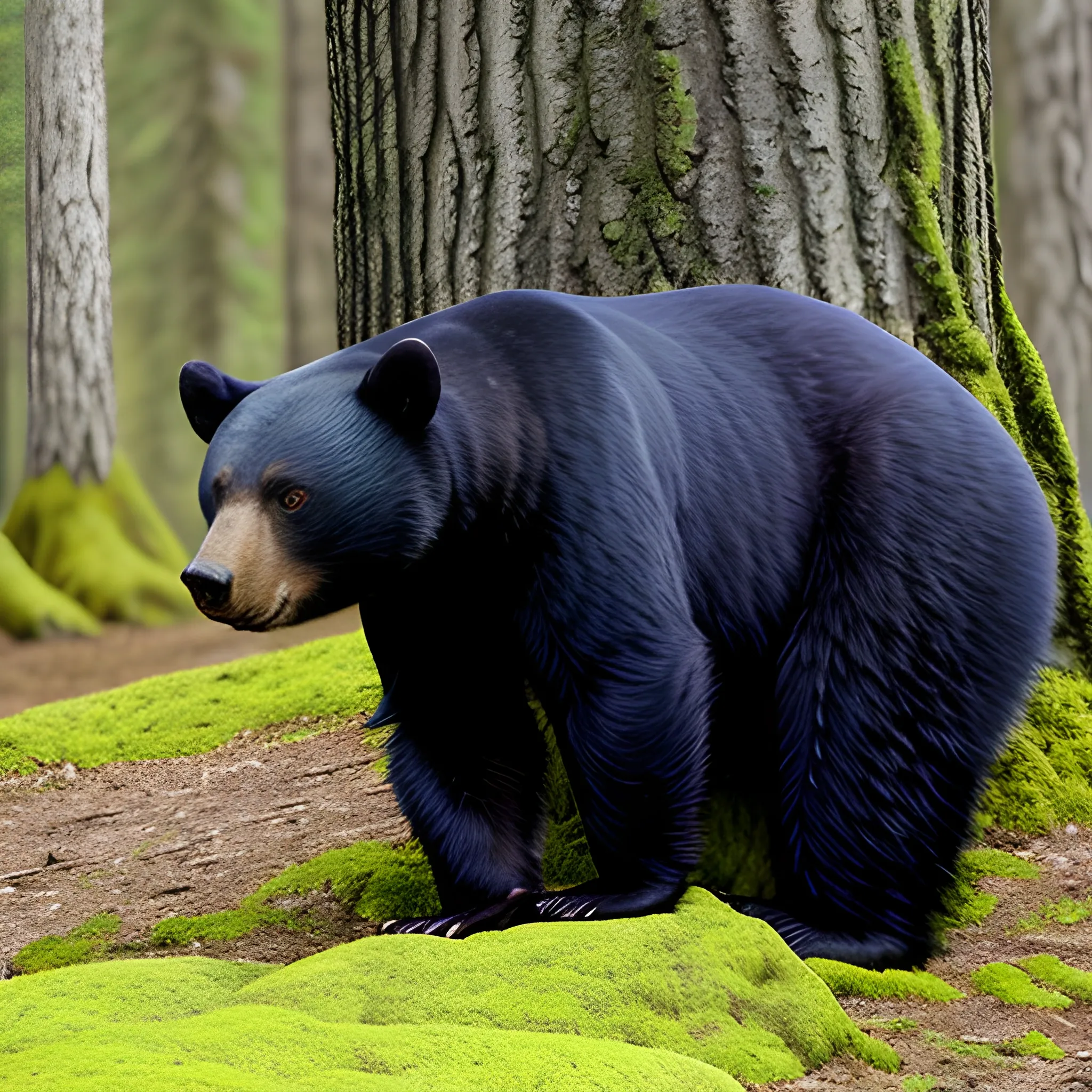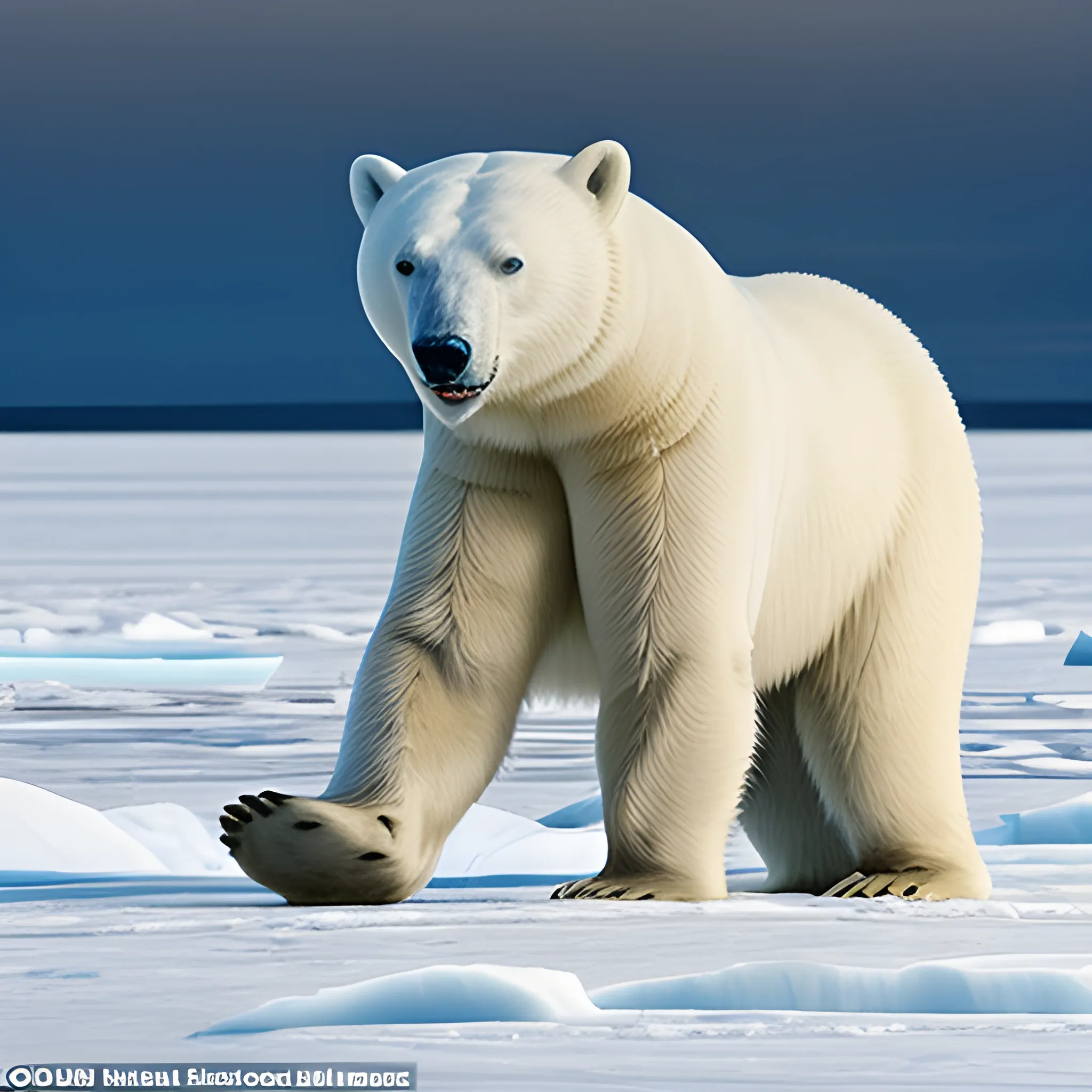Search Results for 600 pounds
Explore AI generated designs, images, art and prompts by top community artists and designers.

Appearance: The black bear is a large mammal with a sturdy build. Its fur is thick and mostly black , hence its name , although some individuals may have a light-brown muzzle or a small white patch on their chest. The fur is soft to the touch , providing excellent insulation during colder seasons. Adult black bears typically stand around 5 to 7 feet tall when on their hind legs and can weigh anywhere between 200 to 600 pounds , with males being larger than females. Features: The black bear has a distinctive humped back , which is a result of powerful muscles that enable them to dig and climb with ease. Their shoulders are well-developed , and their front paws have sharp claws , which they use for digging and climbing trees. Their strong jaws are equipped with sharp teeth , allowing them to consume various foods , including fruits , nuts , insects , and small animals. Despite their name , black bears can come in various shades of brown and cinnamon , but their fur generally appears dark from a distance. Habitat: Black bears are highly adaptable creatures and can be found in a range of habitats , including dense forests , mountainous regions , swamps , and even arid scrublands. They tend to favor areas with ample food sources , such as berries , nuts , and smaller mammals. In your DND world , they could inhabit ancient forests or remote wilderness areas , sometimes sharing territories with other woodland creatures. Behavior: Black bears are generally solitary animals , with the exception of mothers with their cubs. They are omnivorous , meaning they eat both plant matter and meat , but they are not typically aggressive unless provoked or threatened. They are skilled climbers , often seeking refuge in trees to avoid danger or to rest. During colder months , black bears may hibernate , using their stored fat reserves to survive the winter. Role in the World: In your DND world , black bears could play various roles , serving as guardians of certain areas , or sometimes appearing as natural obstacles for adventurers traveling through the wilderness. Druids and rangers might have a special connection with these majestic creatures , and they could be revered as symbols of strength , endurance , and adaptability. Encountering a black bear in the wild could offer opportunities for non-combat interactions , such as avoiding the creature by using stealth or calming it through the use of animal handling skills. However , if threatened or cornered , black bears could defend themselves fiercely , making them a potential challenge for adventurers who aren't careful in their approach. ,

Appearance: The polar bear is an imposing and majestic creature that roams the icy , frozen expanses of the polar regions. Its most distinctive feature is its dense , white fur , which provides excellent camouflage against the snow and ice. Polar bears have black skin , which helps them absorb and retain heat from the sun. This unique adaptation helps them survive in the frigid temperatures of their habitat. Adult polar bears can reach heights of 8 to 10 feet when on their hind legs and can weigh anywhere from 900 to 1 , 600 pounds , making them one of the largest bear species. Features: Polar bears have a streamlined body shape and powerful limbs that make them excellent swimmers. Their large paws are equipped with sharp claws , which aid them in catching prey and providing traction on ice. Their keen sense of smell allows them to detect seals , their primary food source , from great distances. Their jaws are incredibly strong , allowing them to crush through thick ice to access breathing holes of seals. Habitat: Polar bears are uniquely adapted to live in the Arctic regions , where they inhabit ice floes , coastlines , and pack ice. In your DND world , they might roam the frozen wastelands , guarding their territory and hunting for seals and other Arctic creatures. Behavior: Polar bears are solitary animals and are well-adapted to the harsh conditions of the Arctic. They are opportunistic predators , mainly preying on seals , but they may also scavenge on carcasses and eat vegetation if necessary. Polar bears are excellent swimmers and can travel long distances over ice and open water in search of food. Role in the World: In your DND world , polar bears might symbolize the resilience and adaptability of life in extreme environments. They could be revered by Arctic-dwelling tribes or seen as protectors of the icy wilderness. Druids and rangers with a connection to the Arctic might find a spiritual affinity with polar bears. Encountering a polar bear in the Arctic could be a rare and awe-inspiring sight for adventurers. Due to their remote habitat , polar bear encounters might be infrequent but incredibly memorable. In your campaign , adventurers might have opportunities to observe polar bears from a distance , engage in non-combat interactions , or witness their powerful hunting prowess. However , as with any wild predator , provoking or engaging in combat with a polar bear would be a dangerous endeavor , as they are incredibly strong and capable predators. ,